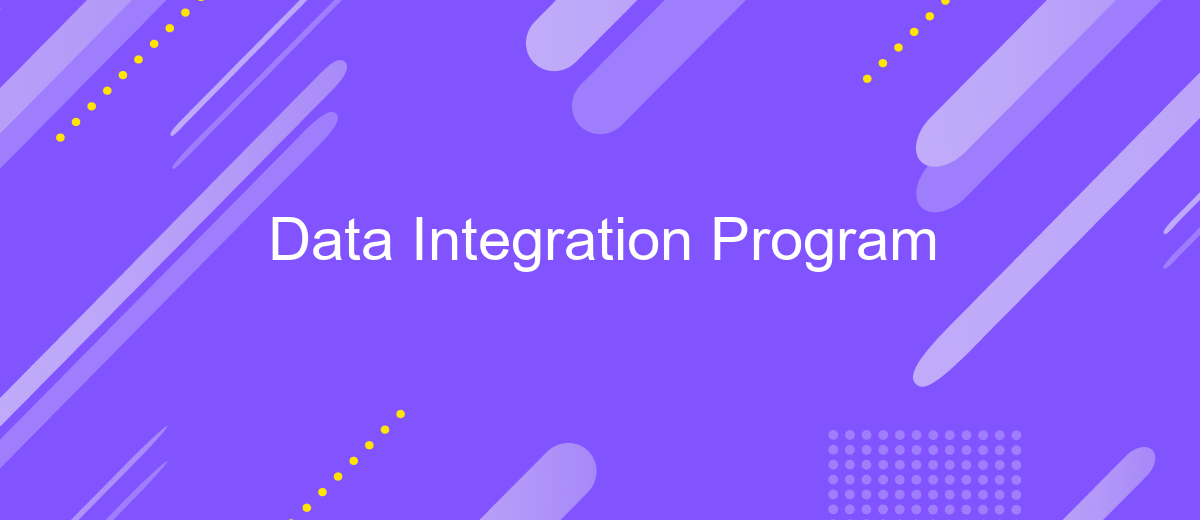Data Integration Program
Data integration is a critical component of modern business operations, enabling seamless communication and collaboration across various systems and platforms. The Data Integration Program aims to streamline and enhance these processes by providing robust solutions for data consolidation, transformation, and management. By leveraging cutting-edge technologies and methodologies, the program ensures that organizations can access accurate, timely, and comprehensive data, ultimately driving informed decision-making and operational efficiency.
Understanding Data Integration Needs and Objectives
Understanding the needs and objectives of data integration is crucial for any organization aiming to leverage its data assets effectively. The primary goal is to seamlessly combine data from various sources to provide a unified view that enhances decision-making and operational efficiency. Organizations must first identify the specific business objectives they aim to achieve through data integration, such as improving customer insights, enhancing operational processes, or enabling advanced analytics.
- Identify key data sources and their formats.
- Determine the integration level required (real-time, batch, etc.).
- Assess the quality and consistency of data across sources.
- Define security and compliance requirements.
- Establish clear success metrics and KPIs.
Once the needs and objectives are clearly defined, organizations can select appropriate tools and technologies that align with their goals. This strategic approach ensures that the data integration program is not only technically sound but also aligned with the business strategy. By doing so, organizations can unlock the full potential of their data, driving innovation and maintaining a competitive edge in the market.
Designing the Data Integration Architecture

Designing a robust data integration architecture requires careful consideration of various factors to ensure seamless data flow across systems. First, it's essential to assess the existing infrastructure and identify the specific needs of the organization. This involves understanding the data sources, formats, and the frequency of data updates. A well-structured architecture should support scalability, flexibility, and security, allowing for future growth and adaptation to new technologies. Implementing a centralized data repository can streamline data access and management, fostering a more efficient integration process.
Utilizing integration platforms like ApiX-Drive can significantly simplify the setup and management of data integrations. ApiX-Drive offers a user-friendly interface to connect various applications and automate data transfers without the need for extensive coding knowledge. This service can help organizations quickly adapt to changing business needs by enabling easy configuration and modification of data flows. By leveraging such tools, businesses can enhance their data integration architecture, ensuring reliable and timely data exchange across all systems involved.
Implementation and Development

To successfully implement a Data Integration Program, it is crucial to establish a clear framework that encompasses all stages of development. This involves understanding the data sources, defining integration goals, and selecting appropriate tools and technologies. The process requires collaboration among stakeholders to ensure alignment with business objectives and compliance with data governance policies.
- Identify and assess data sources to determine compatibility and integration requirements.
- Design a scalable architecture that supports current and future data integration needs.
- Select and implement data integration tools that align with the organization's technical landscape.
- Develop data transformation and cleaning processes to ensure data quality and consistency.
- Test and validate the integration workflows to ensure they meet the defined objectives.
- Deploy the integration solution and monitor its performance for continuous improvement.
Continuous development and refinement are essential for the long-term success of a Data Integration Program. By regularly reviewing and updating the integration processes, organizations can adapt to evolving business needs and technological advancements. This proactive approach ensures that the data integration framework remains robust, efficient, and capable of delivering valuable insights to drive business growth.
Testing and Quality Assurance

Ensuring the reliability and accuracy of a Data Integration Program is crucial for its success. Testing and Quality Assurance (QA) play a vital role in identifying potential issues early in the development process. By implementing comprehensive testing strategies, organizations can mitigate risks and enhance the overall performance of their integration solutions.
Effective QA involves a combination of automated and manual testing techniques. Automated testing helps in efficiently validating data flows and transformations, while manual testing is essential for verifying complex scenarios that require human judgment. Together, these approaches ensure that the integration processes meet the desired quality standards.
- Unit Testing: Validates individual components for correct functionality.
- Integration Testing: Ensures seamless interaction between integrated systems.
- Performance Testing: Assesses system speed and scalability under load.
- Data Validation: Confirms data accuracy and consistency across sources.
Continuous monitoring and feedback loops are integral to maintaining high-quality data integration. By regularly reviewing test results and addressing identified issues, teams can adapt to changing requirements and improve their processes over time. This proactive approach not only enhances data integrity but also boosts user confidence in the integration program.


Deployment, Maintenance, and Monitoring
Deploying a Data Integration Program requires careful planning and execution to ensure seamless integration across systems. Begin by establishing a robust infrastructure that supports scalability and flexibility. Utilize tools like ApiX-Drive to automate and simplify the integration process, reducing manual intervention and minimizing errors. Ensure that all data sources are securely connected and that data flows are optimized for performance. Testing is crucial; conduct thorough trials to identify potential issues before full deployment. This proactive approach helps maintain data integrity and system reliability from the outset.
Once deployed, ongoing maintenance is essential to adapt to evolving business needs and technological changes. Regularly update integration configurations and security protocols to safeguard against vulnerabilities. Implement a comprehensive monitoring system to track data flow and system performance continuously. ApiX-Drive offers monitoring solutions that provide real-time insights and alerts, enabling quick response to any anomalies. Establish a feedback loop with stakeholders to ensure the system meets operational requirements and enhances decision-making. By prioritizing maintenance and monitoring, organizations can ensure the long-term success and efficiency of their Data Integration Program.
FAQ
What is a Data Integration Program?
Why is data integration important for businesses?
How can I automate data integration processes?
What challenges might I face during data integration?
How can I ensure the security of my data during integration?
Apix-Drive is a universal tool that will quickly streamline any workflow, freeing you from routine and possible financial losses. Try ApiX-Drive in action and see how useful it is for you personally. In the meantime, when you are setting up connections between systems, think about where you are investing your free time, because now you will have much more of it.

